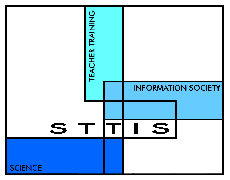Workshop 1
 Contents Contents
|
Section D Transformations: beliefs about learning
Activity
D1 Energy transfer |
|
Aims
-
To explore factors related to beliefs about learning
that may influence teachers’ transformations of the ‘energy transfer’ innovation.
-
To consider these issues in the light of your own
beliefs and teaching experience.
Background
When teachers were asked how they approached teaching
about energy, and their reasons for it, they had strong views about how
pupils could be supported in their learning. This is not surprising, since,
pupil learning is after all their major concern, and they have built up
a great deal of expertise in this area. Beliefs about how pupils learn
clearly influence how innovations are taken up. Is the ‘transformation’
or ‘transfer’ approach to energy easier for pupils? Which gives them a
better understanding of the science? Does it depend on their age or what
they are studying? The following stories address these questions.
[N.B. These stories are based
on research into the work of teachers implementing this innovation. Though
they are not based on particular individuals, they do focus on issues that
were identified in the research.]
What to do
1. It is best to do this activity in a group
of two or three. Before you start discussion, however, work individually
and read through each of the stories on page 2.
For each story, decide whether you are:
-
broadly sympathetic to the position outlined in the
story (S)
-
broadly unsympathetic to the position outlined in
the story (U)
-
neither (N)
Write the appropriate letter next to each story.
2. Discuss each story in turn within the
group. It may be useful to think about the following:
What is the key idea of the story?
-
Are there points that the teacher makes that we all
agree with?
-
Are there points that the teacher makes that we all
disagree with? If so, is this because we disagree in principle or because
we think the teacher has said something factually incorrect? Or because
they say something which may apply in their own situation but not in yours?
-
What are the issues where we do not reach a consensus?
What are the reasons for this?
3. After discussion, work individually again
and look back over all of the stories. Pick out a few key sentences, which
you agree with and think address the most important ideas for you. Underline
them. Pick out a few sentences that you disagree with strongly. Underline
them in a different colour or style. (Make a note of what the colours/styles
mean so that you can work it out later.) You will be returning to these
sheets in a later session. |

 Teaching about energy
Teaching about energy

